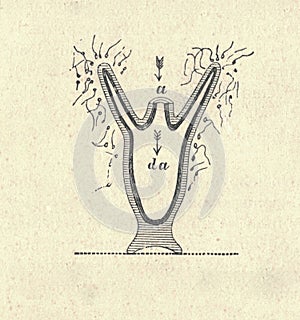- Price: 1$
- Size Facebook: 1702 x 630 px
- Size Twitter: 1500 x 500 px
- Size LinkedIn: 1128 x 191 px
More Facebook, Twitter and LinkedIn Cover Photos
Cover photo info
- Photo title: Antique engraved illustration of the hydra. Vintage illustration of the hydra. Old engraved picture. Longitudinal cross
- Author: Romannerud
- Cover photo description:
- Antique engraved illustration of the hydra. Vintage illustration of the hydra. Old engraved picture. Longitudinal cross section of the hydra. Book illustration published 1907. Hydra has a tubular, radially symmetric body up to 10 mm (0.39 in) long when extended, secured by a simple adhesive foot known as the basal disc. Gland cells in the basal disc secrete a sticky fluid that accounts for its adhesive properties. At the free end of the body is a mouth opening surrounded by one to twelve thin, mobile tentacles. Each tentacle, or cnida (plural: cnidae), is clothed with highly specialised stinging cells called cnidocytes. Cnidocytes contain specialized structures called nematocysts, which look like miniature light bulbs with a coiled thread inside. At the narrow outer edge of the cnidocyte is a short trigger hair called a cnidocil. Upon contact with prey, the contents of the nematocyst are explosively discharged, firing a dart-like thread containing neurotoxins into whatever triggered the release. This can paralyze the prey, especially if many hundreds of nematocysts are fired.
- Image ID:262181552
- Views:0
- Downloads:0
Keywords for Facebook, Twitter and LinkedIn timeline photos
wildlife
vintage
picture
old
natural
image
illustration
history
historic
heritage
graphic
fauna
engraving
engraved
drawing
culture
cultural
century
book
artwork
art
archive
archival
antiquity
antique
animal
ancient
aged
age
19th
1800s
1800
zoology
hydroid
structure
hydrozoa
cnidaria














